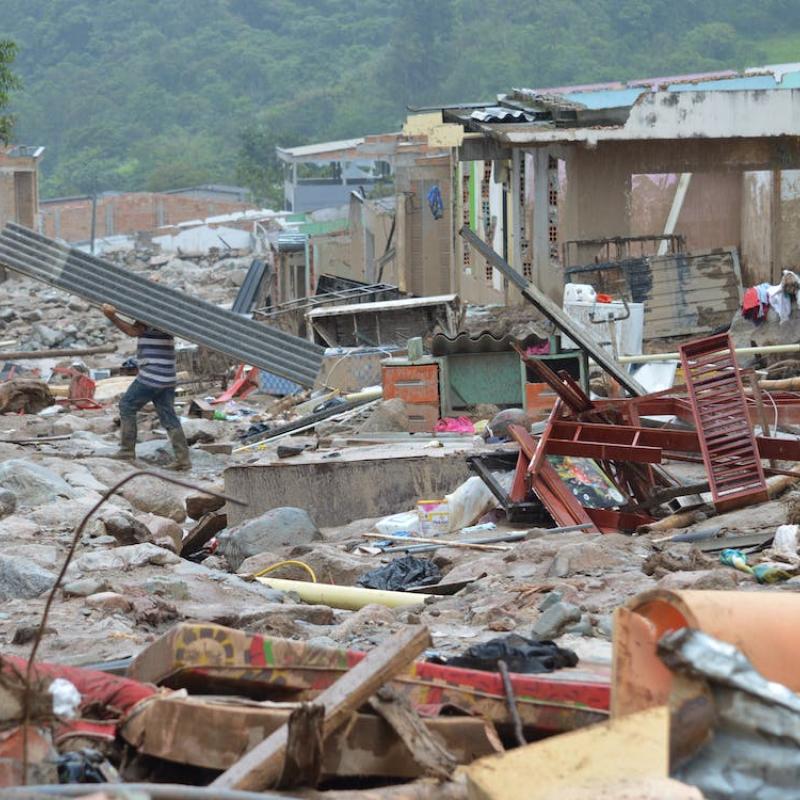Reducing the risk of heatwaves in cities: the invisible and silent disaster of the 21st century

Suggested elective course(s):
- Intra Urban Spatial Patterns and Processes
- Weather impact analysis
- Geo-health
The impacts of extreme heat are deadly, on the rise globally, and preventable. In this challenge, you are invited to make a difference by studying how risks can effectively reduced in the case study area of your choice in collaboration with the Red Cross Climate Centre. You can work from the Netherlands and/or engage in fieldwork!
Heatwaves are often called the ‘silent killer’ and have killed thousands of people in recent years around the globe. Although they are frequently mentioned as the deadliest hazard, there is a large gap in awareness, planning and action to reduce heatwave impacts.[1] A lack of risk perception, both by the public and in some cases by leaders, is resulting in inadequate preparedness for current and future heatwave risks. Especially in tropical and sub-tropical regions where it is relatively warm year-round. Heatwave risks are further magnified in cities, where temperatures are hotter than in rural areas due to the urban heat island effect. They hit hardest among the most vulnerable such as older people, people living in slums and informal settlements, outdoor workers, people with pre-existing health conditions. As the frequency and intensity of heatwaves continue to rise, due to climate change, it is crucial to reduce near- and long-term risks through proactive actions such as early warning system strengthening, heat action planning, urban greening, and urban planning.
Study area & collaboration: This research will be done in collaboration with the Red Cross Red Crescent Climate Centre (RCCC)[2]. In the coming years, we are developing heat action plans in two secondary cities in Indonesia, Tanzania, and Honduras to reduce the impact of extreme heat in cities. In this challenge you will collaborate with local governments, National Meteorological and Hydrological Services and communities. Your research will serve as useful input for these plans. Although not a strict requirement, we encourage you to select a case study area that fits with your language skills, especially if you want to go to the field.
Advisor: Carolina Pereira Marghidan, RCCC – specialized in urban heat risk measures
First supervisor: Dr. Eefje Hendriks – specialized in climate and risk adaptive housing
The supervision team can be extended depending of the focus of your master thesis.
- Prof.dr. Justine Blanford – specialized in geo-spatial analysis and health
- Dr. Sean Vrielink – specialized in impact evaluations of green urban infrastructure measures
- Prof.dr. Marc van den Homberg – Specialized in anticipatory action
[1] Including 3,800 people in Bangladesh in 2005, 1,877 people in Argentina in 2013-14, and 3,729 in India and Pakistan in 2015. IFRC report estimated that “658.1 million people in vulnerable age groups worldwide have experienced extreme temperature events during the COVID-19 pandemic.”
The main objective of this research is to investigate the rising risks of extreme heat in one selected city, either focusing on Indonesia, Tanzania, or Honduras. We have a broad interest to understand what effective measures can be. You are invited to select a topic that is close to your interest. Your involvement could address one of the following aspects:
- Analysis of spatio-temporal data of historical extreme heat events and their impact on health (e.g. mortality/morbidity rates, hospital admissions). Daily information on weather variables (e.g. temperature, humidity, air pollution) should be collected, or openly available remotely sensed temperature datasets can be analyzed (e.g. CHIRTS-daily). Health data should be gathered in collaboration with the local Red Cross.
- Analysis of community-based approaches and barriers to deal with extreme heat. This can include spatial risk assessments, surveys, and focus-group discussions.
- Stakeholder mapping to explore heat action plan development and responsabilities.
- Development of a Heat Risk Index using a combination of open-access datasets (incl. vulnerability and exposure data on high-resolution scale) to identify the areas most at-risk and prioritize interventions to reduce risk across space.
- Investigating the potential of the built environment (e.g. nature-based solutions and green infrastructure) to reduce impacts of heat, looking at vernacular solutions and evaluation of the current housing using climate adaptive design tools. This may also include analyzing the impact of the built environment and housing design on indoor temperatures using temperature loggers.
- Evaluation of the (potential) impact of location specific Nature Based Solutions, based on literature and interventions, geo-spatial analysis, urban planning strategies, housing designs.
- Analysis of the Urban Heat Island (UHI) effect to identify spatial and temporal variations in heat, by integrating open-access, high-resolution remote sensing data, observational data, and spatial analysis techniques. This can inform potential interventions.
- UN OCHA (2022). Extreme heat: Preparing for the heatwaves of the future. Available at: https://www.preventionweb.net/publication/extreme-heat-preparing-heatwaves-future
- https://www.barcelona.cat/barcelona-pel-clima/en/barcelona-responds/specific-actions/climate-shelters-network
- Perkins, S.E. and Alexander, L. V. (2013). On the measurement of heat waves. Journal of Climate, 26(13), pp.4500–4517.
- McGregor, G.R., Bessemoulin, P., Ebi, K. and Menne, B. (2015). Heatwaves and Health: Guidance on WarningSystem Development. Available from: http://www.who.int/globalchange/publications/WMO_WHO_Heat_Health_Guidance_2015.pdf
- Campbell, S., Remenyi, T.A., White, C.J. and Johnston, F.H. (2018). Heatwave and health impact research: A global review. Health and Place, 53(September), pp.210–218. Available from: https://doi.org/10.1016/j.healthplace.2018.08.017.
- Kotharkar, R. and Ghosh, A. (2021). Progress in extreme heat management and warning systems: A systematic review of heat-health action plans (1995-2020). Sustainable Cities and Society, 76(September 2021), p.103487. Available from: https://doi.org/10.1016/j.scs.2021.103487
- Singh, R., Arrighi, J., Jjemba, E., Strachan, K., Spires, M. and Kadihasanoglu, A. (2019). Heatwave Guide for Cities. Red Cross Red Crescent Climate Centre, 2019. Available from: http://dx.doi.org/10.1016/j.cirp.2016.06.001%0A
